State Funds Needed for Local Road Resurfacing
- Details
- Written by Joanne Wallenstein
- Hits: 4950
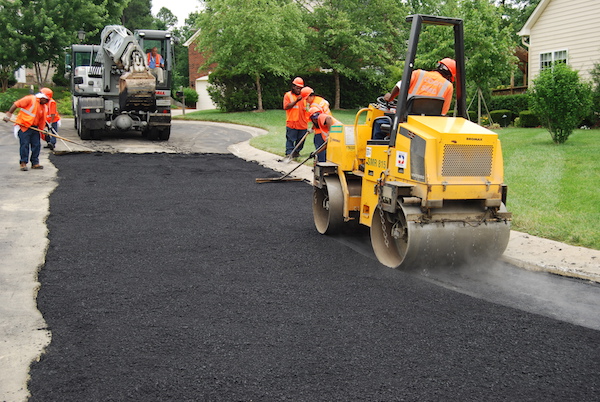 State funds for critical local infrastructure needs for roadways and bridges are shrinking, further increasing the pressure on local governments to raise property taxes to fill the gap. Scarsdale Mayor Jon Mark sent letters to the Chairmen of the NYS Transportation Committee Joseph E. Robach and David F. Grant asking them to re-appropriate funds for road re-surfacing.
State funds for critical local infrastructure needs for roadways and bridges are shrinking, further increasing the pressure on local governments to raise property taxes to fill the gap. Scarsdale Mayor Jon Mark sent letters to the Chairmen of the NYS Transportation Committee Joseph E. Robach and David F. Grant asking them to re-appropriate funds for road re-surfacing.
Here is the text of the letter.
April 7, 2016
The Honorable Joseph E. Robach
Chairman, New York State Senate Transportation Committee
188 State Street Room 803, Legislative Office Building
Albany, NY 12247
Dear Senator Robach,
The Village of Scarsdale is disappointed that the adopted FY2017 New York State budget fails to adequately address pressing un-funded local infrastructure needs, including roadway rehabilitation/reconstruction and bridge repair or replacement, as well as other non-transportation infrastructure essentials. While the State does provide The Consolidated Local Street and Highway Improvement Program (CHIPS) support, funding levels have not kept pace with increasing costs.
The cities, towns, and villages of New York are struggling to maintain infrastructure critical not only to the social, environmental, and economic health of localities, but also to that of the State of New York. Deferred maintenance contributes heavily to a deteriorated road network and significantly amplifies costs associated with roadway rehabilitation, once such important repairs are finally possible to undertake. Local fiscal constraints, including flat or declining non-property tax revenues, severe limitations on property tax revenue growth as a result of the State of New York's tax cap legislation, sharply escalating costs that are beyond local control, such as employee health premiums through the New York State Health Insurance Program, and reductions in necessary State revenue sharing all contribute to a downward spiral in local roadway conditions, as there is simply not enough revenue to rise to the infrastructure challenges with which we are confronted.
The new status quo, one where critical infrastructure is neglected and increasingly results in reduced reliability and higher costs to taxpayers, is not sustainable. As the safety and reliability of New York's infrastructure continues to erode, we are placing our future economic competitiveness and the desirability of our communities at risk.
I urge you, as New York State Senate Transportation Committee Chair, to increase the visibility of this substantial local concern and encourage additional FY2017 funding to be re-appropriated in support of local roadway resurfacing and rehabilitation.
Very truly yours,
Jonathan I. Mark
Letter to the Editor: Application for Flag Lot Should be Denied
- Details
- Written by Joanne Wallenstein
- Hits: 4538
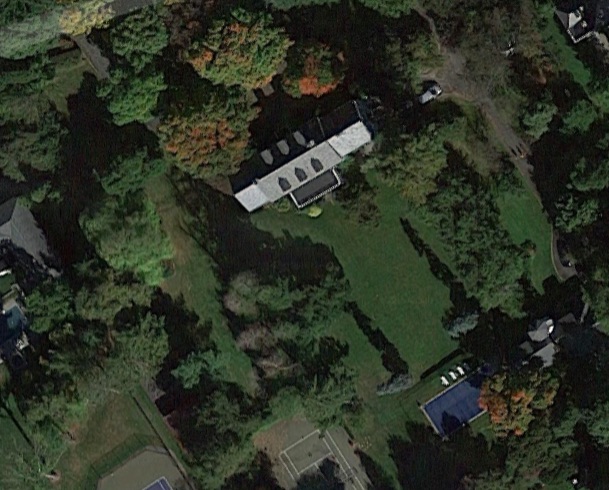 March 31, 2016
March 31, 2016
Scarsdale Planning Department/Board of Appeals
Scarsdale, N.Y. 10583
To Whom it May Concern at the Scarsdale Board of Appeals:
We write to you as neighbors of the Friberg/Peterson family at 54 Park Road in the Greenacres section of Scarsdale. We are writing to strongly object to the family's application to the Scarsdale Zoning Board of Appeals for area variances in order to create a "Flag Lot" on their premises. We are objecting to this application for the following reasons:
1. One of the most unique and precious qualities of "the Grange" in Greenacres, especially Park Road, is the existence of gracious lots and open space on and around individual properties. We feel so fortunate to have lived in this area and raised our children here. We believe that any variances which might result in increased development potential at 54 Park Road would pose a threat to the future quality of life on our street. If a flag lot is designated on this property, thereby allowing for future subdivision, the use of the property would change to allow for the development of two separate large homes with accessory structures and facilities.
2. If the variances are granted and the property use is changed, there will be a significant environmental impact on Park Road in and around 54 Park Road resulting from increased traffic and use of utilities.
3. Any increased development potential on this site will increase the density of our immediate area and adversely affect our property values. There is such a scarcity of open space and larger lots in Scarsdale, we are hoping to protect the quality of our lovely neighborhood in the present and future as well.
While we appreciate that no new construction has been proposed at 54 Park Road either in conjunction with this application or for the near future, we are well aware that any variances granted will "run with the land" and permanently guide the future uses of this site. We recognize the claim that the Friberg/Peterson family is motivated to seek the subject variance for the purpose of personal estate planning. While we are sensitive to their objective of providing for their family, we believe that this estate planning can be better and comprehensively achieved through legal instruments. Our neighborhood should not have to bear the negative consequences of their personal estate planning. No one can predict the future; if in fact the applicants want to safeguard the existing structures on their beautiful property, the most effective way of doing this is by leaving the property and its uses "as is."
We understand well and appreciate the mission of the Zoning Board of Appeals to balance the property rights of an individual owner versus those of the larger community. We are hopeful that this respected Board will see that the protection of the quality of the neighborhood and its residents outweighs the requests of the Friberg/Peterson application. There are very good reasons why this Board has not
granted a new Flag Lot since 1989, and we are cautiously optimistic that this record of maintaining the character of our special community through sound planning decisions will continue.
Respectfully yours,
Maria and Jacques Brand
55 Park Road
Greenacres: Conversation Continued at Second Public Forum
- Details
- Written by Joanne Wallenstein
- Hits: 6304
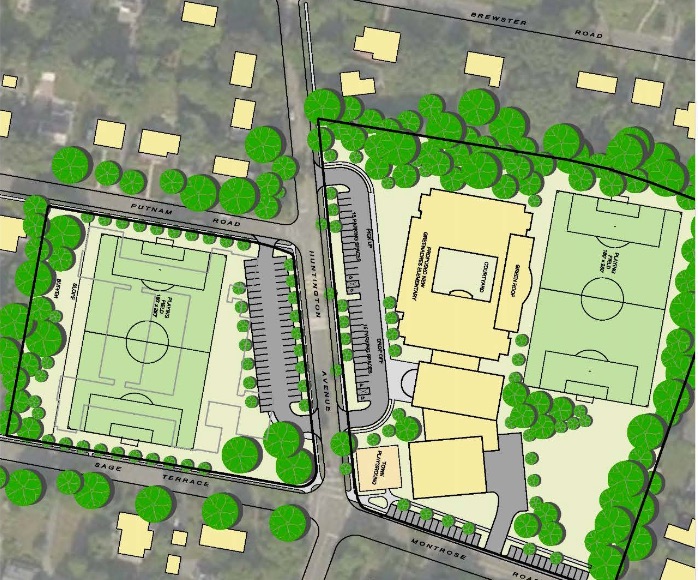 The community continued to vet two options for the Greenacres School at a public forum on March 15 that was televised and will be available on video on demand. Architect Russ Davidson from KG&D explained and compared the two options that were recommended by the Greenacres Building Committee and also reviewed a recent building conditions survey of all district facilities.
The community continued to vet two options for the Greenacres School at a public forum on March 15 that was televised and will be available on video on demand. Architect Russ Davidson from KG&D explained and compared the two options that were recommended by the Greenacres Building Committee and also reviewed a recent building conditions survey of all district facilities.
Superintendent Hagerman explained that bonding for the Greenacres project and other improvements will be voted on in a community wide referendum in May 2017. He said, "I think in order to pass a bond of this magnitude, there may need to be something for everyone in the bond."
Speaking to an audience that appeared to be well versed on the two options, Davidson compared Option B1, a two-story, six-classroom addition on the Huntington Avenue side of the original school to Option C, which calls for a new school on the field opposite the current school.
According to Davidson, the square footage of outdoor space for playing fields would be similar for both plans. However, if the new school were built, the existing site of the school would be converted to playing fields that would be across the street, and not contiguous with the field. He also said that Option C now includes 44,000 square feet of parking vs. 22,000 square feet of parking for Option B1. He said that this can be modified depending on community feedback.
The goal of the session was to get feedback from the audience and almost everyone who came to speak favored preservation of the existing field. In fact, later in the meeting one woman asked why the district had spent money formulating plans for the new school when community sentiment appeared to favor renovation of the existing building. Davidson explained that it was necessary to do due diligence. When proposing such a large renovation, the question ultimately arises about the cost of a new school, so therefore the concept was explored. Hagerman added that the district has gotten emails and comments in favor of the new school from people who were reluctant to speak in public.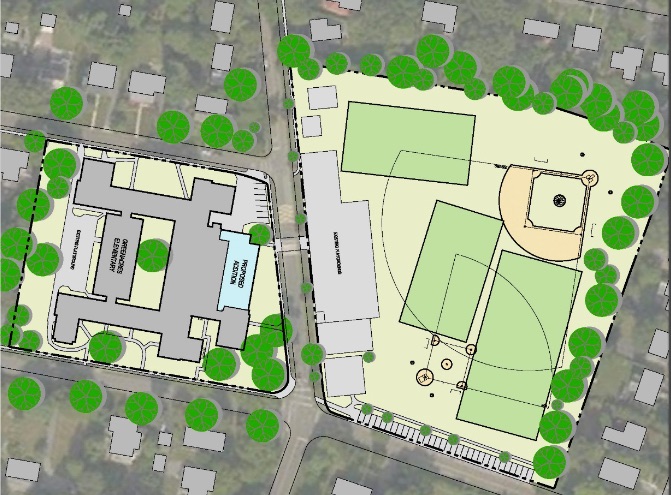
Here's a recap of some of the comments made by residents at the meeting.
The first speaker said, "I am totally against option C. I live on Kingston Road and it will cause more traffic and disrupt the water level on the field. The current building can be adapted to meet the needs."
The loss of the blacktop area and the 90-foot baseball field were cause for concern for another resident. She asked if the new plans had a blacktop area and Davidson pointed to an irregularly shaped area on the site of the existing school. She said that the blacktop is used for biking and roller blading. She also said that there were only two high school sized baseball fields in Scarsdale, one at Greenacres. She said she did not think the new plans could accommodate the larger-sized field.
Concerns about the safety of the children during the construction process weremaired. One woman wanted to know how asbestos, lead and mold could be removed with children present in the school. Davidson assured her that the new classrooms would be built first and then kids could vacate other portions of the building to be renovated. He said, "No asbestos abatement will be done while children are in the building. There are strict standards from NYS... Areas will be cordoned off and there will be separate entrances, exits and ventilation procedures. It can be done safely."
Will there be cafeterias in both options? Davidson said the seating areas will be the same in options B1 and C, but said there will be a district wide discussion about food service in all district elementary schools before the bond is passed.
Another man said, "We moved here two years ago because it's a beautiful community. I am speaking to the importance of open space. To have an open space the size of the Greenacres field is extraordinary for our kids. When you consider the importance of open space it becomes clear that what Greenacres has to offer is quite unique."
Are there contingencies in the budget for cost overruns? Davidson said, "We are confident of our estimates. They have a 10% design contingency and a 10% construction contingency as well as a cost escalation for each year out. That's the best practice for budgeting."
Another woman spoke passionately about the field saying, "I found it most disturbing that the priority of the school is more important than the entire community. We don't have another open space. There is nothing like a space with open views. It makes us mentally and physically healthy. This field is valuable to the entire community. In your report you do not talk about what you are taking away from the entire community. I think we need that field. It should be part of what is Greenacres. I just don't want to see you take it away from us."
Dr. Hagerman said, "We are approaching this through the lens of the educational needs of children. We understand the importance of the fields. We struggle because our focus is educational adequacy."
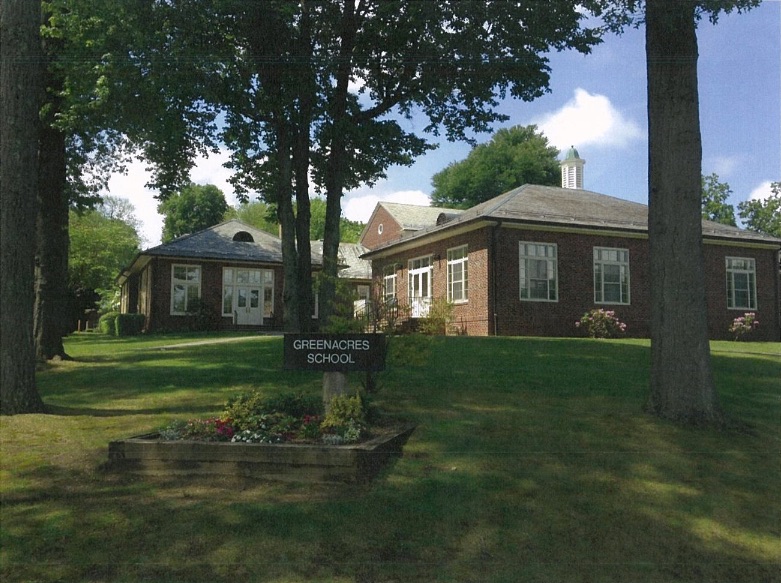 A woman who lives near the school said, "Many of us are here to save the field. Option B1 would accommodate the new type of teaching and it would tackle 95% of what can be built at the new school. This really is a community field. Why does the decision have to take so long? It must be expensive. Why can't we vote sooner and save everyone's time and money?"
A woman who lives near the school said, "Many of us are here to save the field. Option B1 would accommodate the new type of teaching and it would tackle 95% of what can be built at the new school. This really is a community field. Why does the decision have to take so long? It must be expensive. Why can't we vote sooner and save everyone's time and money?"
Dr. Hagerman explained that the district needs "to do this work to assign priorities and decide what should go into the next bond offering."
A speaker added, "Just because people say they want to save the field doesn't mean they don't care about education. One of the big concerns about education is performance. Kids perform better when they have outdoor space. Consider three years with no outdoor space. There will no place for the kids to be outdoors. The first priority is to create a welcoming environment that meets the needs of the students. Either option meets those goals."
The mother of a elementary school child said, "What is 21st century education? Education is supposed to give our kids more skills so that they can find a better job to contribute to society in the future. Will the new building give children more skills? (She answered her own question saying) No! Option B1 can do the same thing and save more money."
Dr. Hagerman sought to explain the need for larger classrooms saying, "We expect kids to be active in the classroom and moved into mixed groups. The infrastructure of old buildings makes it difficult to integrate technology. The speaker said, "You have to be specific." Hagerman continued to explain that schools now offer more services including nurses, psychologists and special education that required private spaces. She continued by discussing the lack of outdoor space during construction saying, "How can my child go through these three years. It's torture, it's not acceptable, and continued with, "I am not playing nice. I was fooled last year by twisted blueprints."
A question arose from another speaker about auditoriums. In both schemes a stage will be included in the gym to be used for performances. As for air conditioning, most of the space in option B1 would have AC and all of Option C would be air conditioned.
Another woman thanked the board for doing a great job and brought up a book called "Last Child in the Woods, " which she said contains scientific research demonstrating that children's ability to think and learn is enhanced by greater exposure to open space within or surrounding the school's boundaries. She said that studies show that outdoor space makes a difference while classroom size does not.
A 1974 graduate of Greenacres School said that Option B1 did not have a music room while the new school would. But he called that a "worthy tradeoff." He also said that parity between elementary schools has always been an issue, and added, "If we build a new school at Greenacres will we have to build new ones in other areas?"
A woman who lives adjacent to the field told the superintendent, "You should have had these forums before you went down this path. We have a petition with the names of over 50% of Greenacres residents to save the field. You did not get the emotional pulse of this neighborhood." She argued that the field has a big water issue and that a playing field on the site of the school would be too short and require a 15-foot cyclone fence to prevent balls from going into the street.
Russ Davidson said that there is actually more space between the field and the street.
Another resident discussed the need for open space and the positioning of the new building on the site. She said, "The majority of the public wants to save the field. This is the only open space in our green neighborhood. It is important to children and adults. Open green space, sunshine and fresh air are important for young children's wellbeing. In the winter, the field will be in the shade of the building. There will be no sunshine."
One woman spoke about further examination of a new school. She said, "Whatever the decision is, my kids will not directly benefit. This is a district decision about children who will attend the schools 50-100 years from now. I love tradition and historic buildings yet I see great things in option C. We are lucky to have these options. We should give each consideration. The educational mission has suffered at Greenacres because of inadequate space. Let's think about 100 years from now. I agree that green space is important, but because of the climate we live in, indoor space is just as important. Having recess in the classroom is not good. Better interiors, windows, ventilation are important. During a lot of the year, learning takes place indoors. What would it be like in the new space? It would be helpful to have a rendering of the green space for option C. Thinking ahead to kids in the future, I am not in the B1 or bust camp."
A resident who is an architect praised KG&D's work and said she was here to support B1. She said, "I bought the house in Greenacres because of the park." She worried that the Village would run out of money and not have enough funds to complete the new building. She also said, "I think the school is a wonderful historical building. We should respect the history and the older people." She then added, "I am wondering if we can build a bridge over Huntington Road so that people can go across the road without crossing the street."
A man who served on the Greenacres building committee assured that group that "the vast amount of time on the committee was spent on the field, drop-off and pickup. It was not given short shrift. " He also said, "At what point is there enough green space? Six acres may not be better. It's not that more field equals more play."
Davidson pointed out that for option B1, about the 1/3 to ½ of the field across the street will be needed to stage the construction. The same contingency amounts have been assigned to both projects.
A longtime resident said, "You have to understand that the field is our outdoor community center. If you change the field it will change the character of the community and have a negative community impact."
A father of a high school student said, "Scarsdale does not have a good history of taking care of its open space. The Winston Estate was left to the village and they turned around and sold it to a developer. What would have happened if the village maintained that space? There is a huge shortage of fields at the high school.
Even teams who have the home field advantage don't have a field to use in Scarsdale."
Another woman called for either building to be built sustainably. She asked the district to retain consultants from the Living Building Movement to consult on how to build to consider the health of the earth and the health of the children.
Another resident asked if B1 would include renovation to the gym. He said, "I think you should update that space. I don't think it meets the needs of the kids. It should be addressed."
Dr. Hagerman concluded the meeting by telling the audience, "We are at the very beginning stages of this work. This is an ongoing conversation. We will continue the process to examine all options. We have heard from 50% of residents but we want to hear from all residents.
School Board to Ask Architect for More Information on Renovating and Expanding Greenacres School
- Details
- Written by Joanne Wallenstein
- Hits: 5787
 The Board revisited the question of the Greenacres School at their meeting on Monday March 21. They discussed the two public forums where they gathered community feedback, which leaned heavily toward renovating the existing school and adding six classrooms, instead of building a new school on the field across the street.
The Board revisited the question of the Greenacres School at their meeting on Monday March 21. They discussed the two public forums where they gathered community feedback, which leaned heavily toward renovating the existing school and adding six classrooms, instead of building a new school on the field across the street.
All board members weighed in on next steps. Chris Morin said he had heard virtually no support for a new school on the field and therefore supports option B1. Suzanne Seiden said the board needed to decide on the entire scope of the project, even if it were to be phased in. She also said that Greenacres should be the priority for the next bond referendum and that the work that needs to get done at the school should be done. Bill Natbony said, "We've heard from the community. We should be looking at B1. I can't support Option C and don't think we should be spending money on that." Pam Feuhrer voiced support for taking care of as much work as possible at Greenacres. Rublin said, "The forums were helpful. But some of the people who were interested in a new school could not express themselves. Anyone who wants a new school should articulate that." Lee Maude concluded that six board members said that B1 was the right decision for the community, but added, "it may not be the right decision for the children over the next 50 years." She also said that the architect was now planning to put the HVAC in the basement, though there are serious concerns about the condition of the basement.
Dr. Hagerman said that the districts needs a complete list of what was in Option B1 before making a final decision. Chris Morin concluded that the Board was taking option C off the table. Silberfein said he would need to speak to architect Russ Davidson before deciding what should be done. Suzanne Seiden said the Board should provide the building steering committee with the list of the projects that have been done in the district during the last 10-15 years for context and a list of what remains to be done.
After discussion, the Board decided to ask architect Russ Davidson for a more complete list of what was in Option B1 and hold a meeting to review it. Outstanding questions include the cafeteria, renovations to the existing gym, the status of the two second level classrooms, air conditioning and more.
Lewis Arlt's First Act
- Details
- Written by Joanne Wallenstein
- Hits: 7455
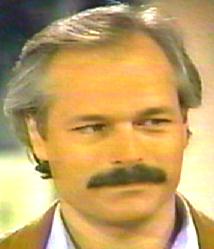 He's handsome, charming and a skilled public speaker. Though most people here know Lewis Arlt as the man who heads up Houlihan Lawrence's busy Scarsdale office, there's far more to his story. Before going into real estate, Arlt was famous in another realm. If he looks vaguely familiar, it's probably because you watched him on television. Here's the history on Lewis Arlt:
He's handsome, charming and a skilled public speaker. Though most people here know Lewis Arlt as the man who heads up Houlihan Lawrence's busy Scarsdale office, there's far more to his story. Before going into real estate, Arlt was famous in another realm. If he looks vaguely familiar, it's probably because you watched him on television. Here's the history on Lewis Arlt:
What did you do before you went into real estate?
I spent a lot of time in the theatre, acting, directing and writing. I started in regional theatre in St. Louis, Hartford, and summer stock. Some Broadway. The writing mainly was for soaps.
Where did you train to be an actor?
SUNY New Paltz and Carnegie-Mellon.
How did you get your first break?
Sitting in a New York bar with a CMU classmate after watching him perform in a show on Broadway called Equus. My friend ran into a friend there who just happened to be producing a new play later that year, and they'd apparently already auditioned every other young male actor in New York. I fell into it. As Peter Cook says, "one thing led to her mother, and we were married on the spot."
What were your favorite roles as an actor?
Well that was certainly one: a character named Ted Cotton and the play was called Murder Among Friends. It starred Jack Cassidy and Janet Leigh. That was 1975. I opened the play with Janet, the two of us naked under a bear rug, then got dressed in a tux for New Year's Eve, kissed her bye-bye, then kissed her husband when he came home, later got shot for two-timing, and tumbled down these wonderful circular stairs. End Act One. Had a good try-out in New Haven, not so good in Philly, ran for 3 weeks in New York and closed. But in the audience during that brief run was the casting director of a soap called Search For Tomorrow, Bob Nigro. He called me in to audition for a new role they were creating on Search and I got lucky again.
Which shows were you on for the longest time?
Search was 5 years, that was the longest.
For what roles are you best known?
It's been so long....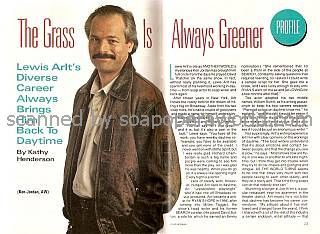 Maybe Ken Jordan on Another World, where I worked with Vicky Wyndham for a year. Ken was sort of an Indiana Jones guy – lots of mystery and hiking clothes. We did some fun shows together – a studio-built Sonora valley rock face with tarantulas biting and bad guys sneaking about – it was a challenge making it real. But it got the heart pumping. That show was also where I later got a chance to direct about 50 episodes.
Maybe Ken Jordan on Another World, where I worked with Vicky Wyndham for a year. Ken was sort of an Indiana Jones guy – lots of mystery and hiking clothes. We did some fun shows together – a studio-built Sonora valley rock face with tarantulas biting and bad guys sneaking about – it was a challenge making it real. But it got the heart pumping. That show was also where I later got a chance to direct about 50 episodes.
You also became a television writer – tell us about that?
A friend from Search – Millee Taggart - was head writing Ryan's Hope. About 1983, I asked her if I could do a sample script, she was kind and agreed to let me try. After much coaching and re-writing, I got the hang of it, and wrote for Ryan's for about 5 years. That was great fun. I also worked for Claire Labine, the brilliant creator of the show who is a master storyteller. We did Ryan's together and later General Hospital. I got to write a wonderful scene where a doctor transplants his recently dead daughter's heart into the chest of the little girl's cousin, who needs one. And he says, as he gently touches his daughter's heart beating in the cousin's chest, "Daddy loves you." Well, that's rich.
When did you make the career change and why?
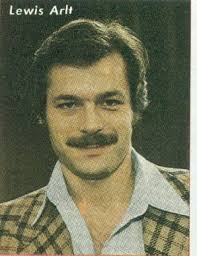 Why? I needed work. Actors have good years and not so good years, it's an iffy business. Writers too. One day in 2000, my wife told me I should get a real job, so I talked to Liz Lindsay, who owned Lindsay Real Estate in Fleetwood. She was kind enough to sponsor me and helped me get my license. She had just joined HL and taken over the Bronxville office. So I worked there in sales for 3 years and learned the business. Then she encouraged the HL brass to give me a shot a managing the Scarsdale office. I think they had also already interviewed every other potential candidate, so I got lucky again. I owe Liz a huge debt of gratitude.
Why? I needed work. Actors have good years and not so good years, it's an iffy business. Writers too. One day in 2000, my wife told me I should get a real job, so I talked to Liz Lindsay, who owned Lindsay Real Estate in Fleetwood. She was kind enough to sponsor me and helped me get my license. She had just joined HL and taken over the Bronxville office. So I worked there in sales for 3 years and learned the business. Then she encouraged the HL brass to give me a shot a managing the Scarsdale office. I think they had also already interviewed every other potential candidate, so I got lucky again. I owe Liz a huge debt of gratitude.
From what you can tell, how has the business changed since you left?
Broadway has gotten more commercial, if that's possible. Regional theatre – my first love – continues to be a wellspring of new writing and acting talent, but without subsidy by good boards of directors – angels – it's hard to run on ticket sales alone. So, many struggle. Attention spans have shortened in life, as in the theatre; it's hard to find a good thinking-person's two and half hour play, but thank goodness the classics are still among us.
How do you use your training as an actor in your position at Houlihan Lawrence – with the agents? With the clients?
There are many correlations. If you enjoy performing for strangers, taking abuse with a smile, job instability, and dancing to the tune of others, either will do nicely. But the rewards are enormous. We all live to serve. And every office team is a family of sorts – similar to a cast of actors. Being able to help in some small way people reach their potential is its own reward.
Do you miss the acting life? Are you ever tempted to make a go of it again?
Sometimes it does call to me. Or maybe that's my imagination. I'm not sure I have the stamina to dive back in.
Do people stop you on the street and ask you why you look familiar?
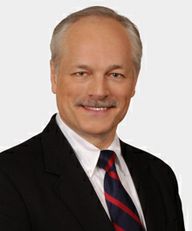 Not for the theatre roles any more – now they smile and say hi because we've met at the office, or a closing, or at the Chamber, a local shop, or the JCC or the Junior League. A different scene. Perhaps Act Two, scene one.
Not for the theatre roles any more – now they smile and say hi because we've met at the office, or a closing, or at the Chamber, a local shop, or the JCC or the Junior League. A different scene. Perhaps Act Two, scene one.














